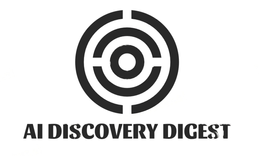In the ever-evolving landscape of fundraising, non-profit organizations are constantly seeking innovative ways to connect with donors and maximize their impact. Enter artificial intelligence (AI), a technology that is transforming industries across the globe. For non-profits, AI offers a wealth of opportunities to enhance their fundraising efforts and engage supporters in new, exciting ways.
Imagine harnessing data to predict donor behavior or using chatbots for instant communication. The possibilities are endless. As technology continues to advance, it’s crucial for non-profits to explore how AI can elevate their missions and drive meaningful change. Let’s dive into how this powerful tool is reshaping the world of charitable giving and paving the way for more successful fundraising events.
How AI Can Improve Fundraising Efforts
AI can transform fundraising efforts in remarkable ways. By analyzing donor behavior, it identifies patterns that help organizations target the right audience effectively.
Predictive analytics enables non-profits to forecast donation trends. This insight allows for better planning and resource allocation, ensuring events are well-prepared for potential outcomes.
Personalization is another significant advantage AI brings to fundraising activities. Tailored messages resonate more with donors, increasing engagement levels and encouraging higher contributions.
Moreover, chatbots streamline communication during events. They provide instant responses to inquiries, enhancing attendee experience and fostering a sense of connection between supporters and the organization.
Automation tools can manage repetitive tasks like sending reminders or processing donations. This frees up valuable time for teams to focus on building relationships rather than getting bogged down by administrative duties.
Case Studies of Successful AI Implementation in Non-Profits
One notable example is Charity: Water, which harnessed AI to analyze donor data. By predicting individual giving patterns, they tailored their outreach efforts effectively. This strategy led to a significant increase in donations.
Another success story comes from the American Red Cross. They implemented machine learning algorithms to optimize disaster relief fundraising campaigns. The AI helped identify potential high-value donors and segment audiences for targeted messaging, resulting in more efficient resource allocation.
World Wildlife Fund (WWF) also leverages AI technology to enhance their event planning processes. Using predictive analytics, they forecast attendance rates and set realistic fundraising goals based on past events’ performance.
These case studies illustrate how various non-profits are embracing artificial intelligence not just as a tool but as a strategic partner in achieving their missions more efficiently.
Challenges and Limitations of Using AI in Fundraising Events
While AI offers many benefits, it also presents challenges for non-profit organizations. One significant issue is data privacy. Collecting and analyzing donor information can raise ethical concerns. Trust is essential in fundraising, and mismanaging sensitive data may compromise that trust.
Another limitation lies in the initial investment required for AI technology. Many small non-profits struggle to allocate resources for advanced software or systems. This financial barrier can prevent them from fully leveraging AI’s potential.
Moreover, there’s a learning curve associated with implementing new technologies. Staff may require training to effectively use AI tools, which takes time and effort away from their core missions.
Reliance on algorithms can inadvertently lead to biases in targeting donors or crafting messages. Ensuring inclusivity remains paramount as organizations embrace these innovative solutions without alienating any segment of their supporter base.
Conclusion
The integration of AI into non-profit fundraising is a game-changer. It offers innovative solutions that enhance efficiency and effectiveness in various aspects of fundraising events. From data analysis to personalized outreach, organizations can leverage technology to engage donors more meaningfully.
While there are challenges to consider—such as cost, training, and ethical implications—the benefits often outweigh the hurdles. By adopting AI tools thoughtfully, non-profits can optimize their efforts and ultimately increase funding for their causes.
As these technologies evolve, they will likely continue transforming how non-profits operate. Embracing this change could mean not just survival but thriving in an increasingly competitive landscape for donations. The future holds promise for organizations ready to harness the power of AI in their mission-driven work.


